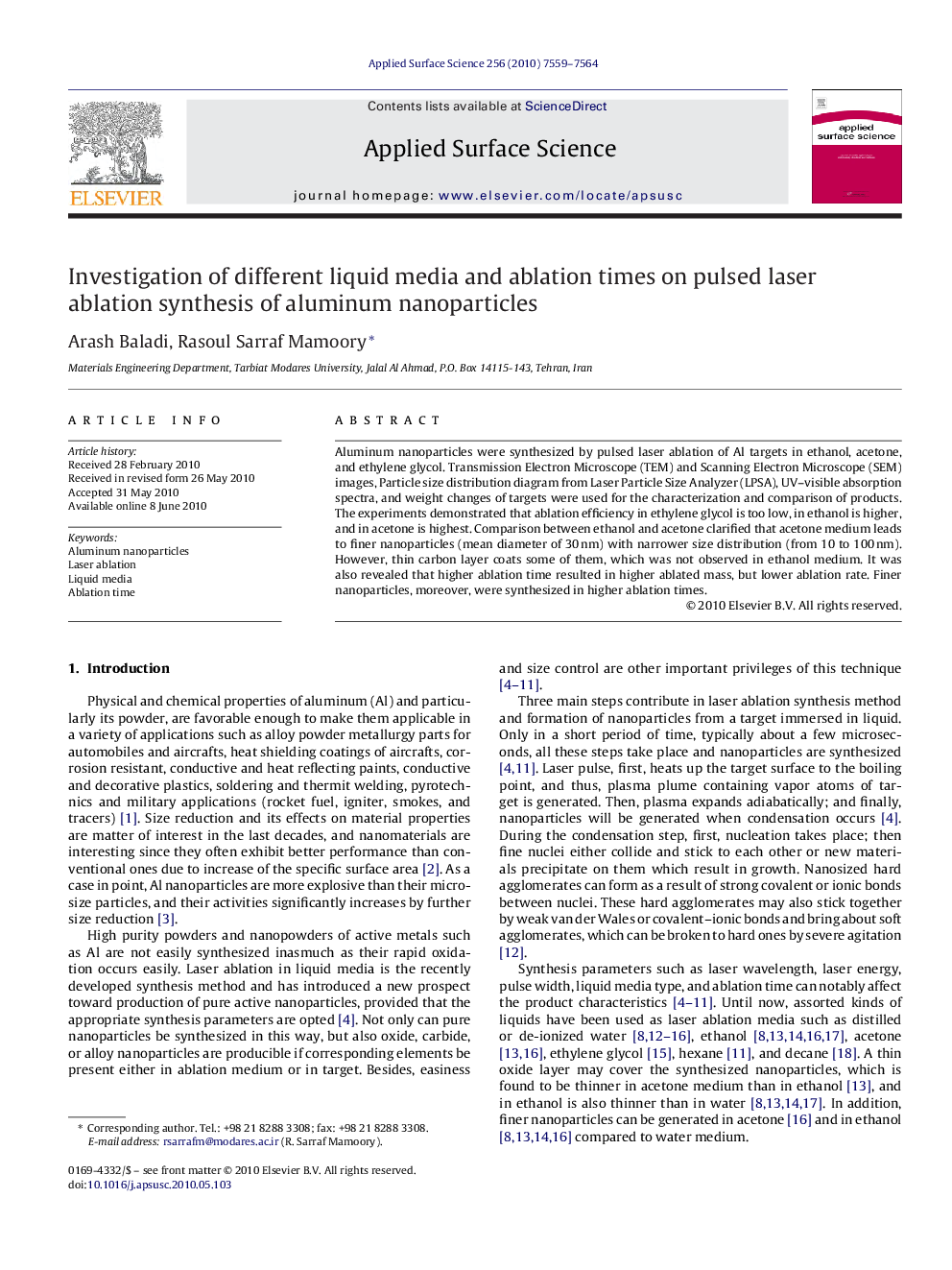| Article ID | Journal | Published Year | Pages | File Type |
|---|---|---|---|---|
| 5362675 | Applied Surface Science | 2010 | 6 Pages |
Aluminum nanoparticles were synthesized by pulsed laser ablation of Al targets in ethanol, acetone, and ethylene glycol. Transmission Electron Microscope (TEM) and Scanning Electron Microscope (SEM) images, Particle size distribution diagram from Laser Particle Size Analyzer (LPSA), UV-visible absorption spectra, and weight changes of targets were used for the characterization and comparison of products. The experiments demonstrated that ablation efficiency in ethylene glycol is too low, in ethanol is higher, and in acetone is highest. Comparison between ethanol and acetone clarified that acetone medium leads to finer nanoparticles (mean diameter of 30Â nm) with narrower size distribution (from 10 to 100Â nm). However, thin carbon layer coats some of them, which was not observed in ethanol medium. It was also revealed that higher ablation time resulted in higher ablated mass, but lower ablation rate. Finer nanoparticles, moreover, were synthesized in higher ablation times.
